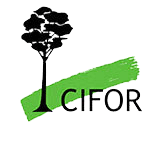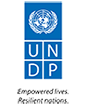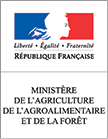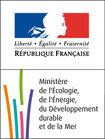Investors are motivated to support the development of financial solutions for integrated landscape initiatives. This became clear at a recent The Investment Case event in London (Unlocking Capital for Land Use and Conservation Projects: the Business case for Investing)
The discussion forum will give the opportunity to present concrete business cases in conjunction with three financial instrument solutions:
- Multi-layered investment funds.
- Conservation/environmental performance indexed bonds.
- Landscape/AFOLU “green” bonds.
These cases are:
- The ECO.BUSINESS FUND (EBF), a private investment fund promoting biodiversity conservation and sustainable use of natural resources in Latin America and the Caribbean, particularly through the channel of local financial institutions.
- The LAND DEGRADATION NEUTRALITY (LDN) FUND, an investment platform established to support worldwide the transition to stop land degradation by rehabilitating land while generating revenues from sustainable economic production on rehabilitated lots.
- The ALTHELIA CLIMATE FUND (ACF), a private equity fund operating especially in Latin America and The ACF enables investments in forest conservation and management by using the REDD+ mechanism, thus catalyzing sustainable livelihoods and commercial land-use projects while enhancing the surrounding biodiversity and ecosystem services.
- The UNLOCKING FOREST FINANCE (UFF), a project in highly sensitive locations in Latin America and South-East Asia aimed at ending business-as-usual conversion of tropical forests to agriculture. UFF is fostering sustainable land use through restoration of degraded lands, changing agricultural practices, and promoting reforestation via incentives to invest in conservation and sustainable livelihoods.
The EBF, ACF, and UFF initiatives all aim to lead the way on reducing emissions from deforestation and forest degradation. The LDN fund is a direct response to the SDG target 15.3 and aims to secure cost-efficient sequestration or avoidance of 1Gt of CO2 annually and sequestration of roughly 20% of global CO2 emissions over two decades. Above all, all these initiatives mean to help achieve the SDGs by recognizing the social, economic, and environmental interdependencies. They are to be managed to integrate food security, sustainable production, livelihood development, and ecosystem services.
The main objective of the discussion is to build a coalition of stakeholders with a strong interest in reaching a critical mass of investments in financing of landscape initiatives. These stakeholders should be local and international project promoters, developers, corporations, NGOs, regional and national governments, local financial institutions, regional and international Development Financing Institutions, and international institutional investors. Given the diversity of potential land-use and environmental impacts, it is likely that each case calls for an integrated and highly complex mix of solutions.
Each speaker will talk shop, using slides, charts and pictures to illustrate their case experiences.
Key questions addressed
- When and why a financial instrument is deemed a relevant solution?
- Why is it scalable and how?
- What are the hurdles and ways to clear them?
Background reading
Financing Strategies for Integrated Landscape Investment – Synthesis Report
Conservation Finance – Moving beyond donor funding toward an investor-driven approach
Finance in Motion 2014 Impact Investment Report – Generating Returns through Development Finance
Agriculture and the rural economy
Sustainable forestry: a profitable investment
Financing a growing Forest Sector
Innovative climate finance products
Global Canopy Programme, 2015: The Little Book of Sustainable Landscapes (forthcoming)
Websites:
- althelia.com
- fores500.org
- naturalcapitaldeclaration.org
- www.eib.org/infocentre/publications/all/climate-action.htm







































